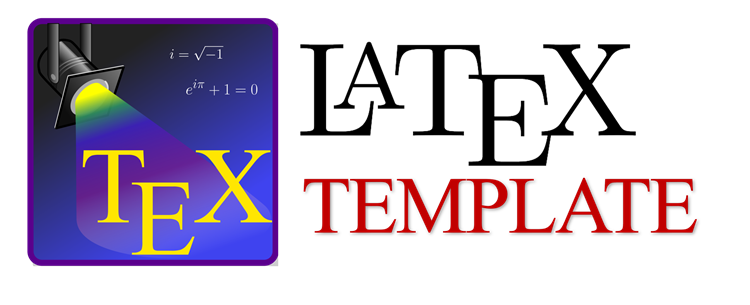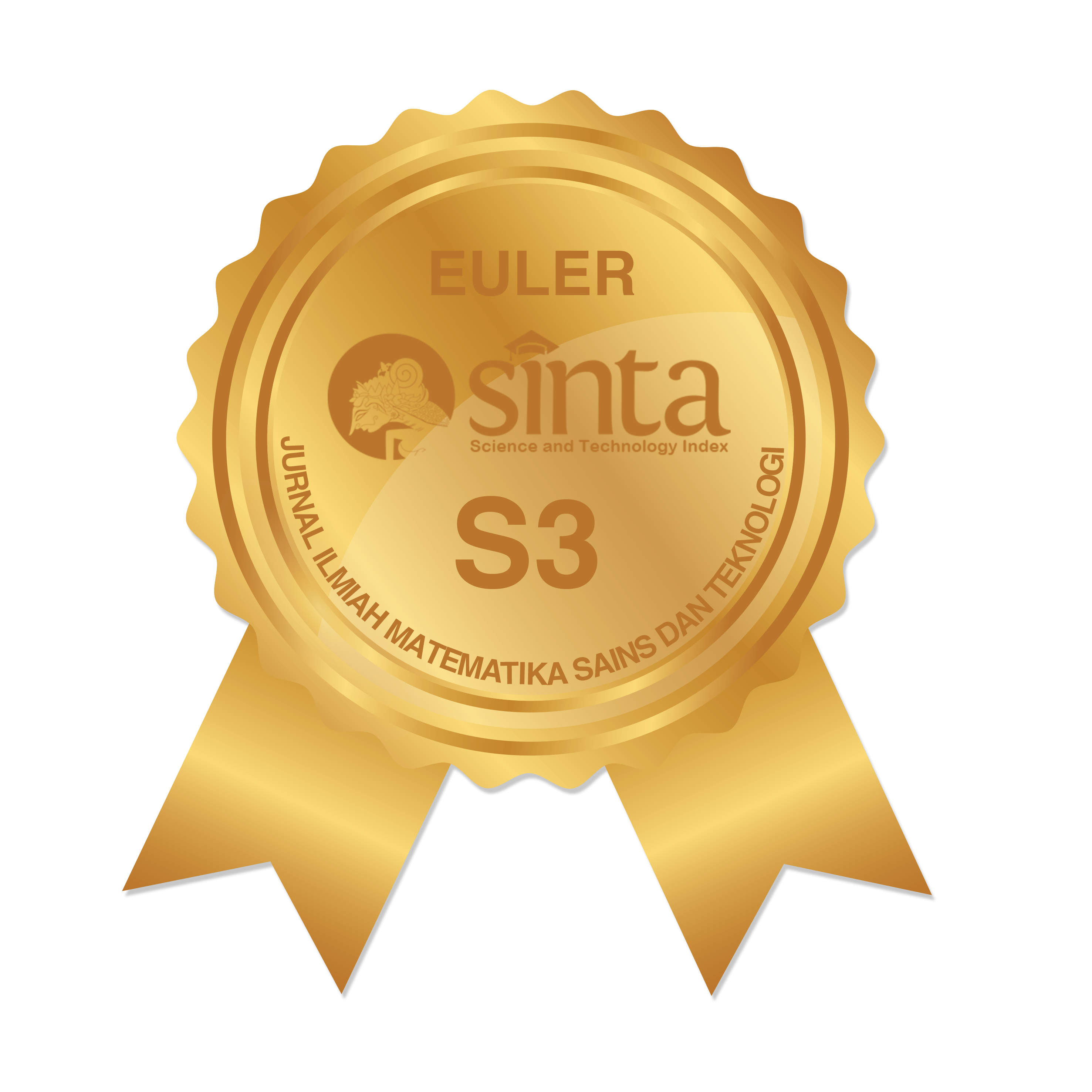Analisis Dinamik pada Model Matematika SVEIBR dengan Kontrol Optimal Untuk Pengendalian Penyebaran Penyakit Kolera
Abstract
Keywords
Full Text:
PDFReferences
J. D. Clemens, G. B. Nair, T. Ahmed, F. Qadri, and J. Holmgren, "Cholera" Lancet, vol. 390, no. 10101, pp. 1539-1549, 2017, doi: 10.1016/S0140-6736(17)30559-7.
S. Swaroop and R. Pollitzer, "Cholera studies. 2. World incidence." Bull. World Health Organ., vol. 12, no. 3, pp. 311-358, 1955.
A. Muslimah, "Wabah Kolera Di Jawa Timur Tahun 1918-1927" J. Pendidik. Sej., vol. 4, no. 3, 2016, [Online]. Available: http://www.univmed.org/wp-
World Health Organization, "Cholera" 2022. https://www.who.int/news-room/fact-sheets/detail/cholera (accessed Jan. 12, 2023).
World Health Organization, "Cholera" 2022. http://www.emro.who.int/health-topics/cholera-outbreak/cholera-outbreaks.html (accessed Jan. 12, 2023).
M. Z. Ndii, Pemodelan Matematika. Yogyakarta: Deepublish, 2018.
S. P. Sari and E. Arfi, "Analisis Dinamik Model SIR Pada Kasus Penyebaran Penyakit Corona Virus Disease-19 (COVID-19)" Indones. J. Appl. Math., vol. 1, no. 2, p. 61, 2021, doi: 10.35472/indojam.v1i2.354.
D. Prodanov, Analytical solutions and parameter estimation of the SIR epidemic model. Elsevier Inc., 2022. doi: 10.1016/B978-0-32-390504-6.00015-2.
S. L. Khalaf and H. S. Flayyih, "Analysis, predicting, and controlling the COVID-19 pandemic in Iraq through SIR model" Results Control Optim., vol. 10, no. January, p. 100214, 2023, doi: 10.1016/j.rico.2023.100214.
X. Wang, D. Gao, and J. Wang, "Influence of human behavior on cholera dynamics" Math. Biosci., vol. 267, pp. 41-52, 2015, doi: 10.1016/j.mbs.2015.06.009.
N. S. Abdul, L. Yahya, R. Resmawan, and A. R. Nuha, "Dynamic Analysis of The Mathematical Model Of The Spread Of Cholera With Vaccination Strategies" BAREKENG J. Ilmu Mat. dan Terap., vol. 16, no. 1, pp. 281-292, Mar. 2022, doi: 10.30598/barekengvol16iss1pp279-290.
N. S. Abdul, L. Yahya, R. Resmawan, and A. R. Nuha, "Dynamic Analysis of the Mathematical Model of the Spread of Cholera With Vaccination Strategies" BAREKENG J. Ilmu Mat. dan Terap., vol. 16, no. 1, pp. 281-292, 2022, doi: 10.30598/barekengvol16iss1pp279-290.
X. Tian, R. Xu, and J. Lin, "Mathematical Analysis of A Cholera Infection Model With Vaccination Strategy" Appl. Math. Comput., vol. 361, pp. 517-535, 2019, [Online]. Available: https://doi.org/10.1016/j.amc.2019.05.055
M. M. Wagner, A. W. Moore, and R. M. Aryel, "Case Detection, Outbreak Detection, and Outbreak Characterization" in Handbook of Biosurveillance, California, USA: Elsevier Academic Press, 2005.
J. Deen, M. A. Mengel, and J. D. Clemens, "Epidemiology of cholera" Vaccine, vol. 38, pp. A31-A40, 2020, doi: 10.1016/j.vaccine.2019.07.078.
A. R. Nuha and R. Resmawan, "Analisis Model Matematika Penyebaran Penyakit Kolera Dengan Mempertimbangkan Masa Inkubasi" J. Ilm. Mat. dan Terap., vol. 17, no. 2, pp. 212-229, 2020, doi: https://doi.org/10.22487/2540766X.2020.v17.i2.15200.
C. Sun and Y. H. Hsieh, "Global analysis of an SEIR model with varying population size and vaccination" Appl. Math. Model., vol. 34, no. 10, pp. 2685-2697, 2010, doi: 10.1016/j.apm.2009.12.005.
A. T. Crooks and A. B. Hailegiorgis, "An agent-based modeling approach applied to the spread of cholera" Environ. Model. Softw., vol. 62, pp. 164-177, 2014, doi: 10.1016/j.envsoft.2014.08.027.
A. I. Abioye et al., "Mathematical model of COVID-19 in Nigeria with optimal control" Results Phys., vol. 28, p. 104598, Sep. 2021, doi: 10.1016/j.rinp.2021.104598.
Resmawan, M. Eka, Nurwan, and N. Achmad, "Analisis Kontrol Optimal Pada Model Matematika Penyebaran Pengguna Narkoba Dengan Faktor Edukasi" J. Ilm. Mat. DAN Terap., vol. 17, no. 2, pp. 238-248, Nov. 2020, doi: 10.22487/2540766X.2020.v17.i2.15201.
O. H. Lerma, L. R. L. Guarachi, S. M. Palacios, and D. G. Sánchez, An Introduction to Optimal Control Theory: The Dynamic Programming Approach, vol. AC-12, no. 6. Springer International Publishing, 2023. doi: 10.1109/TAC.1967.1098723.
N. U. Ahmed and S. Wang, Optimal Control of Dynamic Systems Driven by Vector Measures. Springer International Publishing, 2021. doi: 10.1007/978-3-030-82139-5.
W. Cheney and D. Kincaid, Numerical Mathematics and Comouting. Thomson Brooks/Cole, 2008.
DOI: https://doi.org/10.34312/euler.v11i1.20611
Refbacks
- There are currently no refbacks.
Copyright (c) 2023 Agusyarif Rezka Nuha, Resmawan Resmawan, Sri Lestari Mahmud, Asriadi Asriadi, Andi Agung, Sri Istiyarti Uswatun Chasanah

This work is licensed under a Creative Commons Attribution-NonCommercial 4.0 International License.
Euler : Jurnal Ilmiah Matematika, Sains dan Teknologi has been indexed by:
EDITORIAL OFFICE OF EULER : JURNAL ILMIAH MATEMATIKA, SAINS, DAN TEKNOLOGI |
 | Department of Mathematics, Faculty of Mathematics and Natural Science, Universitas Negeri Gorontalo Jl. Prof. Dr. Ing. B. J. Habibie, Tilongkabila, Kabupaten Bone Bolango 96554, Gorontalo, Indonesia |
 | Email: [email protected] |
 | +6287777-586462 (WhatsApp Only) |
 | Euler : Jurnal Ilmiah Matematika, Sains dan Teknologi (p-ISSN: 2087-9393 | e-ISSN:2776-3706) by Department of Mathematics Universitas Negeri Gorontalo is licensed under a Creative Commons Attribution-NonCommercial 4.0 International License. Powered by Public Knowledge Project OJS. |















